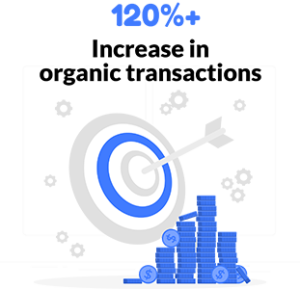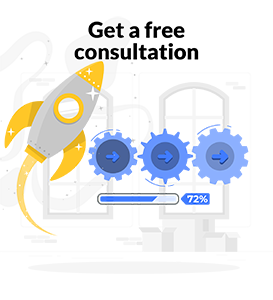Website, A/B Testing & Optimization Tools - Google Optimize
We’ve all heard about A/B testing. But, if you’re not sure what it is or how to use Google Optimize to run experiments, then this guide will help. We’ll cover:
What A/B testing is and why it works
How the power of split-testing can help increase conversion rates on your website? How it will help you get more leads and sales? We’ll also tell you why split testing is so effective at improving conversion rates. And we’ll share some best practices with you along the way! Then we’ll dive into…
What A/B testing is and why it works
How the power of split-testing can help increase conversion rates on your website? How it will help you get more leads and sales? We’ll also tell you why split testing is so effective at improving conversion rates. And we’ll share some best practices with you along the way! Then we’ll dive into…
What is A/B testing?
The best way to do A/B testing is to set up a page with one version of the content. And then, create another page with the same content but slightly different. You can then send traffic from Google AdWords or Facebook Ads to each of these pages. It gives you a better understanding of which one performs better. It is great to test many things, including:
- The copy on your landing pages
- The images used on your landing pages
- The layout or design of your landing page is based on different themes, colors, etc.
What is Google Optimize?
Google Optimize is a free tool you can use to run A/B tests on your website. It allows you to test different layouts, messaging, and other elements of your website. So, you can learn which ones work best for getting conversions. Google Optimize is also useful to test different landing pages to see which ones get more conversions.
Once you sign up, you’ll have access to a dashboard where you can create tests and see results. You’ll also be able to run experiments on your site using Google Optimize integration.
What are some common examples of A/B testing?
A/B testing is a method of comparing two versions of a web page. So, by measuring the results you can determine which performs better. This can be used for many different elements on your site, including:
- Headlines
- Sub headlines
- Call-to-action buttons (CTA)
- Form length and fields
- Form labels and descriptions
- Page background color and CTA button color
How do I know if my test is successful?
You can use Google Analytics to measure the results of A/B tests (we’ll get into that in a later section). If you’re using Google Optimize, then it will provide you with data on how your experiment performed.
If you don’t have access to either of these tools, there are plenty of third-party solutions available. They all do essentially the same thing: provide insights based on your users’ behavior and track results over time. Here are some options:
If you don’t have access to either of these tools, there are plenty of third-party solutions available. They all do essentially the same thing: provide insights based on your users’ behavior and track results over time. Here are some options:
Optimizely
It is one of our favorites because it integrates with both Google Analytics and Google Drive. Meaning, you can edit your experiments from anywhere). Their tool also allows for more complex tests than some other solutions. It is because it offers multi-variable testing. Meaning, running many variations at once rather than just two or three as well as split URL testing. These allow companies to test different messages across multiple channels. Such as email campaigns or landing pages by splitting visitors into groups based on their behavior. So, each visitor sees only one variation at a time until all combinations are tested out completely.
Olark
Oralk is another great option for those who are looking for a simple solution without all the bells and whistles. It’s also free and easy to set up. Oralk is a perfect solution for companies. Companies that don’t have a lot of resources but still want some analytics insight. The downside is that Olark doesn’t integrate with other third-party tools. Also, It doesn’t offer complex testing options as Optimizely does.
Why should I run tests?
In this section, you’ll learn why it’s important to test and optimize your website.
• To learn more about your users
Every site has a unique audience with different needs, wants, preferences and behaviors. The only way to know what works best for someone is to test it out! This can be done by A/B testing (testing two or more variations of the same element) or multivariate testing (testing several elements at once). You can even use data from tools like Google Analytics or Google Optimize. Helping you to look at specific user segments or identify them. Once you’ve identified what works best for each segment of your audience, try implementing these changes on all pages. So, that everyone benefits from them no matter where they go next time they visit.
• To improve conversion rates
Testing helps increase sales by showing visitors exactly what actions they should take next. So, they can make purchases quickly without having too much trouble finding what they need right away. Also, increasing their chances of coming back again soon. For example, if someone visits an e-commerce store looking specifically for winter jackets. Yet, cannot find any products matching their criteria after scrolling through several pages. Then, chances are good there will be little incentive left within them before giving up altogether! So, if instead there was another option available somewhere else on each page, then those results might not seem so dismal anymore. You see where we’re going with this…
• To learn more about your users
Every site has a unique audience with different needs, wants, preferences and behaviors. The only way to know what works best for someone is to test it out! This can be done by A/B testing (testing two or more variations of the same element) or multivariate testing (testing several elements at once). You can even use data from tools like Google Analytics or Google Optimize. Helping you to look at specific user segments or identify them. Once you’ve identified what works best for each segment of your audience, try implementing these changes on all pages. So, that everyone benefits from them no matter where they go next time they visit.
• To improve conversion rates
Testing helps increase sales by showing visitors exactly what actions they should take next. So, they can make purchases quickly without having too much trouble finding what they need right away. Also, increasing their chances of coming back again soon. For example, if someone visits an e-commerce store looking specifically for winter jackets. Yet, cannot find any products matching their criteria after scrolling through several pages. Then, chances are good there will be little incentive left within them before giving up altogether! So, if instead there was another option available somewhere else on each page, then those results might not seem so dismal anymore. You see where we’re going with this…
How long should my test run?
The length of your test depends on a few factors, such as:
- How confident you want to be in the results (this is called the “confidence interval”)
- The number of users you have on your website and how much traffic they generate. The more traffic and users you have, the shorter your test can be.
- The expected effect size. This is a measure of how much impact your experiment will have on user behavior. If you are expecting a small impact (e.g., 5%), then it won’t matter if you run for 3 days or 32 days; both will provide similar accuracy of results!
How big should my audience be?
You don’t need a massive audience size to get results from your tests. In fact, we recommend keeping your tests as small as possible in order to keep the results more accurate. But if you do want to run an A/B test with a larger audience size, we have some tips for doing so:
- The more relevant your audiences are, the better. For example, if you’re testing two different headlines on two different types of users (e.g., male and female), it’s important that each group has similar interests, values, and goals. So, they’re likely to respond similarly when presented with different headlines.
- Run more tests often! One of our most popular topics is “How Many Tests Should You Run?” So, we think that speaks volumes about how important it is to run multiple experiments across time rather than only one or two at a time.
When will I see results in Google Analytics?
The results of your A/B tests will be visible in Google Analytics within 24-48 hours. If you don’t want to wait that long, you can also use Google Optimize to view the performance of your variations in real-time.
For SEO tests, we recommend running 2-3 consecutive experiments on different elements that are important for ranking before deciding on a winner. This will give you enough data to identify what works best for your website’s search traffic and ultimately improve organic rankings.
How do I create an experiment with Google Optimize?
You can create a new experiment by clicking the + button, or you can use an existing experiment as the template for your new one. It’s important that you name your experiment before creating it, so make sure to do this before moving forward.
After naming your test and adding some basic information (namely which goal to optimize for), you’ll be taken to the next step: adding creatives and variants. Google Optimize offers three types of creatives:
- Landing Page – The landing page is what visitors will see when they load up your website after clicking on one of Google’s ads.
- Video Ad – The video ad is shown as part of YouTube TrueView ads or other video platforms’ pre-roll and mid-roll ads.
- Display Ad – This is basically any banner ad available on any platform other than YouTube TrueView campaigns such as DoubleClick Bid Manager or Facebook Ads Manager
Can I use Google Optimize if I'm using another website platform like WordPress, Wix, or Squarespace?
You’ll be able to use Google Optimize on any platform. It’s a free tool that you can use with your current website platform, even if it’s not Google-branded. If your website is powered by WordPress or Wix, for example, you’ll still be able to take advantage of all the benefits that come with using this optimization tool.
It's easy to set up A/B tests in Google Optimize.
Google Optimize is an easy-to-use A/B testing and optimization platform. With Google Optimize, you can run experiments using either our visual editor or by writing code in JavaScript. It works on websites hosted on the web and mobile apps built for Android or iOS devices. You’ll find that setting up a test is pretty straightforward: just drag-and-drop your variation into the experiment editor, click Next, and then set some parameters—like what percentage of traffic should go to each variation—and you’re good to go!
Conclusion
A/B testing is a powerful way to improve the performance of your website. It’s easy to set up A/B tests in Google Optimize and get started quickly with free trials and no credit card required. Try it out today!
Curious about the ins and outs of digital marketing?
Subscribe to our email newsletter for the latest digital marketing insights, and also make sure to read our blogs. See you next time!






